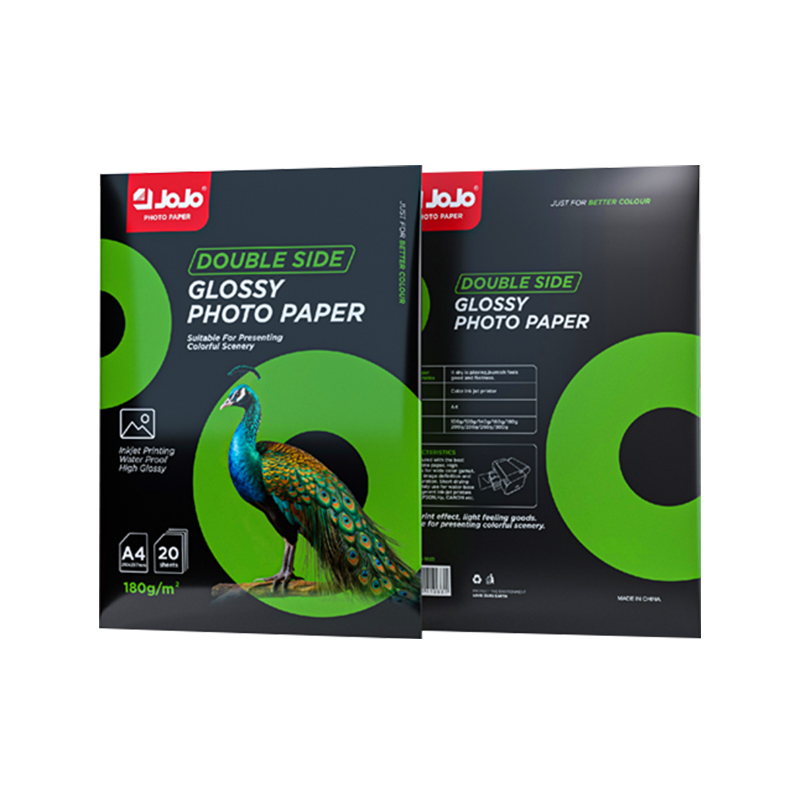If you need any help, please feel free to contact us
Future Directions For Hybrid Media Compatible With Ink And Toner
As digital printing continues to evolve, the demand for hybrid media that works seamlessly with both inkjet and laser toner technologies is steadily increasing. This growing need stems from the desire for more flexible and cost-efficient printing solutions that don't compromise on print quality or media performance. One of the more intriguing aspects of this development is the adaptation of specialized papers—such as thin glossy photo paper, glossy matte photo paper, and thermographic paper—for dual compatibility.

The Shift Toward Hybrid-Compatible Papers
Traditionally, paper types have been designed to match specific printing processes. Inkjet printing typically requires absorbent surfaces that allow liquid inks to penetrate and dry efficiently, while toner-based laser printing needs smoother surfaces that can withstand heat and allow toner to fuse properly. As print environments become more mixed—where both printer types coexist—the need for versatile materials has never been greater.
Hybrid media attempts to bridge this gap. The goal is to engineer papers that offer suitable coating technologies and surface properties, making them functional under both thermal and ink-based systems.
Thin Glossy Photo Paper in Hybrid Printing
One of the challenges with thin glossy photo paper in a hybrid setting is its delicate construction. Thin paper stocks often warp under the heat of laser printers, making them traditionally more suitable for inkjet systems. However, recent innovations in resin coating and heat stabilization techniques have enabled the development of thin glossy papers that retain their shape and surface characteristics, even in toner-fusing processes.
This opens new applications in compact photo printing, mobile kiosks, and lightweight media for marketing materials, where both speed and visual appeal are critical. These improved thin glossy papers offer a balance of weight, durability, and sheen, making them attractive in hybrid printing workflows.
Glossy Matte Photo Paper: Dual Finish, Dual Purpose
Glossy matte photo paper presents another promising direction for hybrid printing. These papers are designed with one side offering a glossy surface and the other a matte finish. The duality in finish allows for multifunctional printing applications—from photo printing on the glossy side to note-taking or barcode labeling on the matte side.
The dual-finish approach also supports a range of aesthetic choices without switching media. For hybrid compatibility, manufacturers are experimenting with advanced coatings that can absorb inkjet dye or pigment on one side while withstanding the thermal demands of toner application on the other. This is particularly useful in commercial photo books, ID cards, or promotional flyers where both sides may need to serve different functions or content types.
Thermographic Paper in Modern Print Applications
Thermographic paper, typically used in security printing and special document effects, is gaining attention in hybrid compatibility research. Traditionally activated by heat to produce raised print effects, thermographic coatings were not initially compatible with high-heat laser processes due to unwanted activation or smudging.
However, developments in heat-sensitive coating formulations are being applied to thermographic papers that only respond at specific, controlled temperature thresholds. This means they can now be safely passed through a laser printer without premature activation. At the same time, they retain enough surface structure to support dye and pigment inks from inkjet printers.
These enhancements make thermographic paper viable in hybrid applications such as event invitations, diploma printing, and legal documents that require tactile authenticity along with full-color graphics.
Looking Forward
The future of hybrid-compatible printing media lies in material science and surface engineering. Manufacturers are focusing on refining coating formulations, controlling paper weight, and ensuring thermal resistance without sacrificing print absorption. As more environments integrate both inkjet and laser printing solutions, the role of adaptive materials such as thin glossy photo paper, glossy matte photo paper, and thermographic paper will only grow.
Moreover, hybrid media supports sustainability by reducing waste—since users no longer need to stock separate papers for different printers. This also streamlines operations for small businesses, schools, and design studios where multiple printer types may be used interchangeably.
In conclusion, the push for hybrid media compatible with both ink and toner is reshaping the expectations and possibilities of modern printing. With targeted innovation and cross-technology thinking, specialized papers are evolving into smarter, more versatile tools for a wide range of creative and commercial needs.

 English
English Español
Español 中文简体
中文简体 Português
Português

